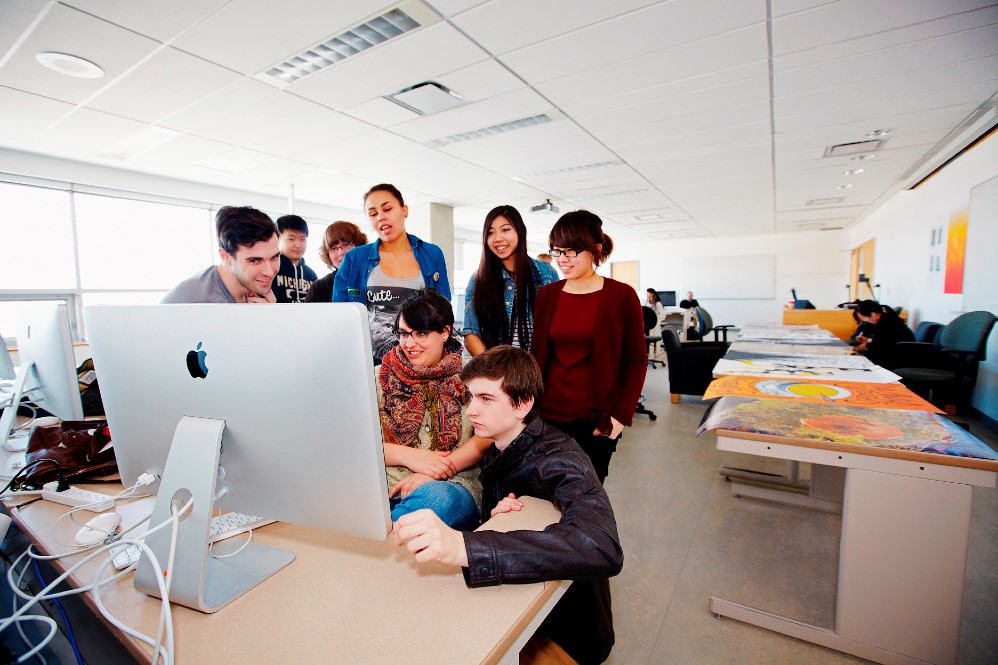Are you wondering how generative AI, like ChatGPT, will affect teaching and learning in higher education? We have collected some resources, in a variety of formats, together in one place as a starting point.
Did you know York's Vice-Provost of Teaching and Learning has their own page? - Generative AI in Teaching and Learning, which includes a wealth of real-world examples, practical advice, and up-to date resources for students and faculty, with a separate section for graduate studies. You will also find a page to support our community in ethical discussions around AI, and a page on the basics of AI, GenAI 101.
If you are looking for professional development opportunities related to artificial intelligence (AI) in teaching and learning, check out a list of events from our website calendar.
SHARE: A Framework for Scholarly Co-Writing with Generative AI
SHARE Framework © 2024 by Robin Sutherland-Harris is licensed under CC BY-NC-SA 4.0. To view a copy of this license, visit https://creativecommons.org/licenses/by-nc-sa/4.0/
The SHARE framework for scholarly co-writing with AI aims to integrate generative AI into the academic writing process. This approach is designed to help students and educators navigate the complexities of authorship, cognitive offloading, and the ethical use of AI in scholarly work. SHARE provides a step-by-step strategy for scholarly co-writing with AI, adaptable to various levels of AI involvement and different assessments. For more information about key concepts and scholarship that inform this framework, as well as a list of references, you can download this .pdf.
Following the creation of a draft text, either by the human author(s) alone or by having AI respond to a prompt or prompts, SHARE proposes a series of writing/editing stages that preserve human authorial integrity. Each stage can be conducted by the human author alone or in conversation with AI.
Streamline
Objective: Remove redundancies, repetitions, and unnecessary words or phrases to make the text more concise and clear.
Application: Identify and eliminate any superfluous content that does not add value to the argument or narrative.
Heighten
Objective: Identify and fill gaps in the content, such as missing scope, content, or counterarguments.
Application: Enhance the text by adding necessary information, expanding on key points, and addressing any overlooked aspects.
Arrange
Objective: Revise the order of paragraphs and sections to ensure logical flow and coherence.
Application: Reorganize the text to improve the structure and ensure that the argumentation progresses naturally and effectively.
Ratify
Objective: Fact-check and ensure the AI-generated content aligns with the author’s intentions and claims.
Application: Verify the accuracy of the information, correct any errors, and ensure that the content reflects the author’s perspective and objectives.
Evidence
Objective: Incorporate evidence, citations, and other elements to build credibility and trust.
Application: Add relevant data, references, and citations to support the claims made in the text and enhance its scholarly value.
Using SHARE in Your Teaching
Flexibility: The framework can be adapted for individual or group work, short or long assignments, and varying levels of AI involvement.
Scaffolding: Steps can be integrated into multiple class sessions, focusing on different aspects of the framework, and various elements of academic writing, revising, and editing.
Critical Framework: SHARE can be used to critically analyze AI-generated texts, fostering deeper discussions about content and writing practices.
Quick Tips:
- Start small: pilot just one stage in a low-stakes task.
- Log everything: saving prompt transcripts makes Ratify easier and can help ease academic integrity concerns.
- Rotate labor: alternate human-first and AI-first versions to show contrasts.
- Leverage discipline-specific tools (e.g., CAD plug-ins, Zotero, chemical-structure generators) to embed SHARE naturally.

Featured resource
Aschaiek, S. (2023, Summer). A bot aced my homework: How ChatGPT is impacting the academic experience. The York University Magazine. https://magazine.yorku.ca/issues/summer-2023/a-bot-aced-my-homework/
Community of Practice: Generative AI Pedagogies at York
This community of practice is dedicated to uniting York University educators who share an interest in generative AI. Together, we connect, collaborate, and share resources, exploring best practices and addressing the challenges and opportunities we face in responding to this technology into postsecondary education. Our community of practice accepts new members at any time, and all who teach at York are welcome.

